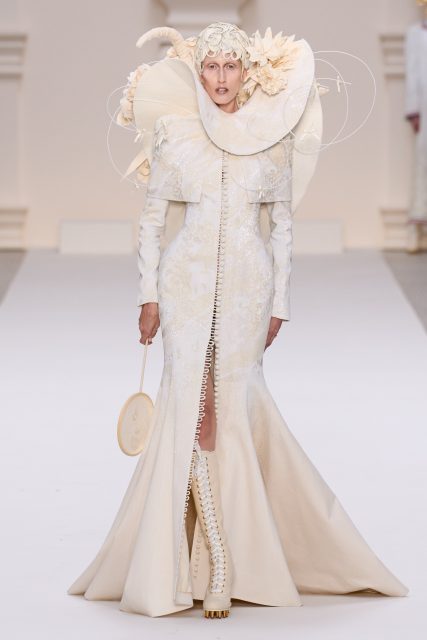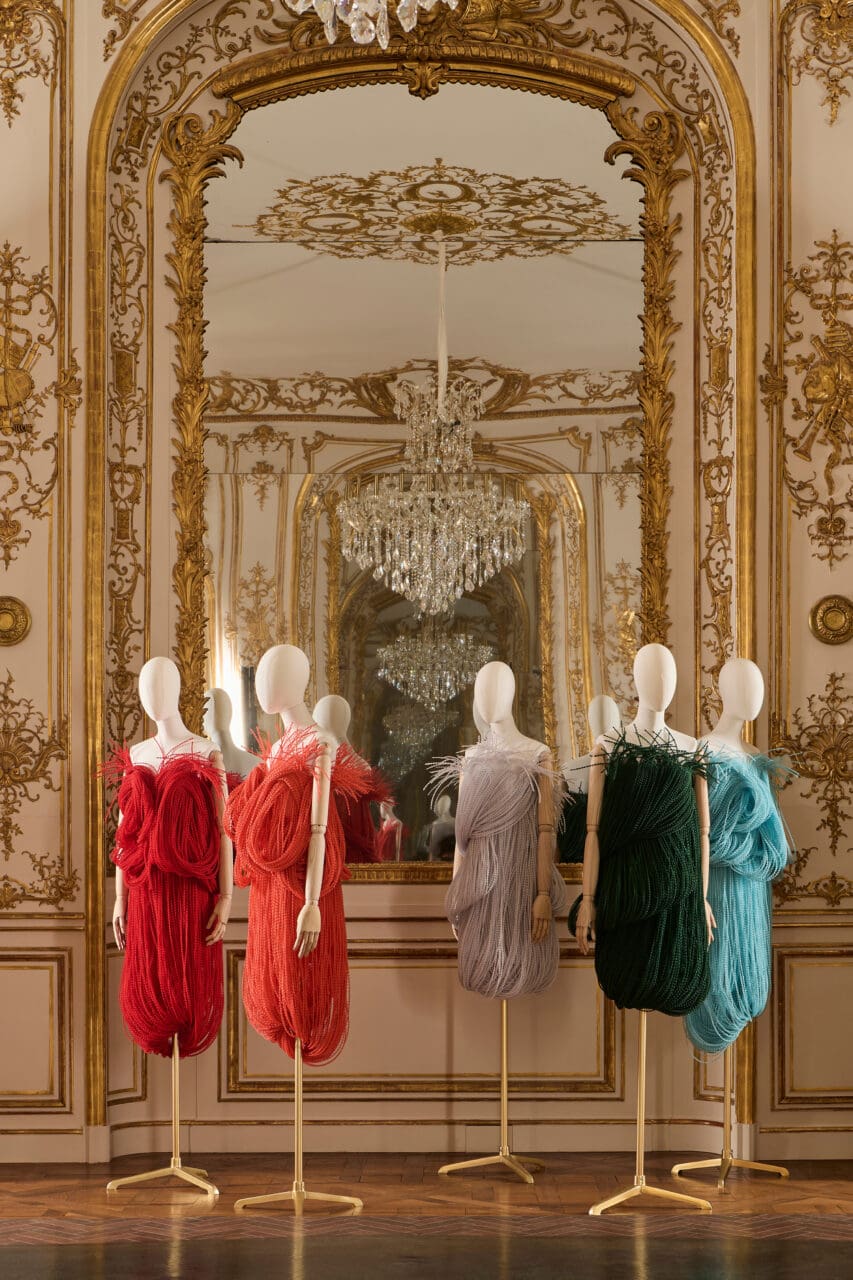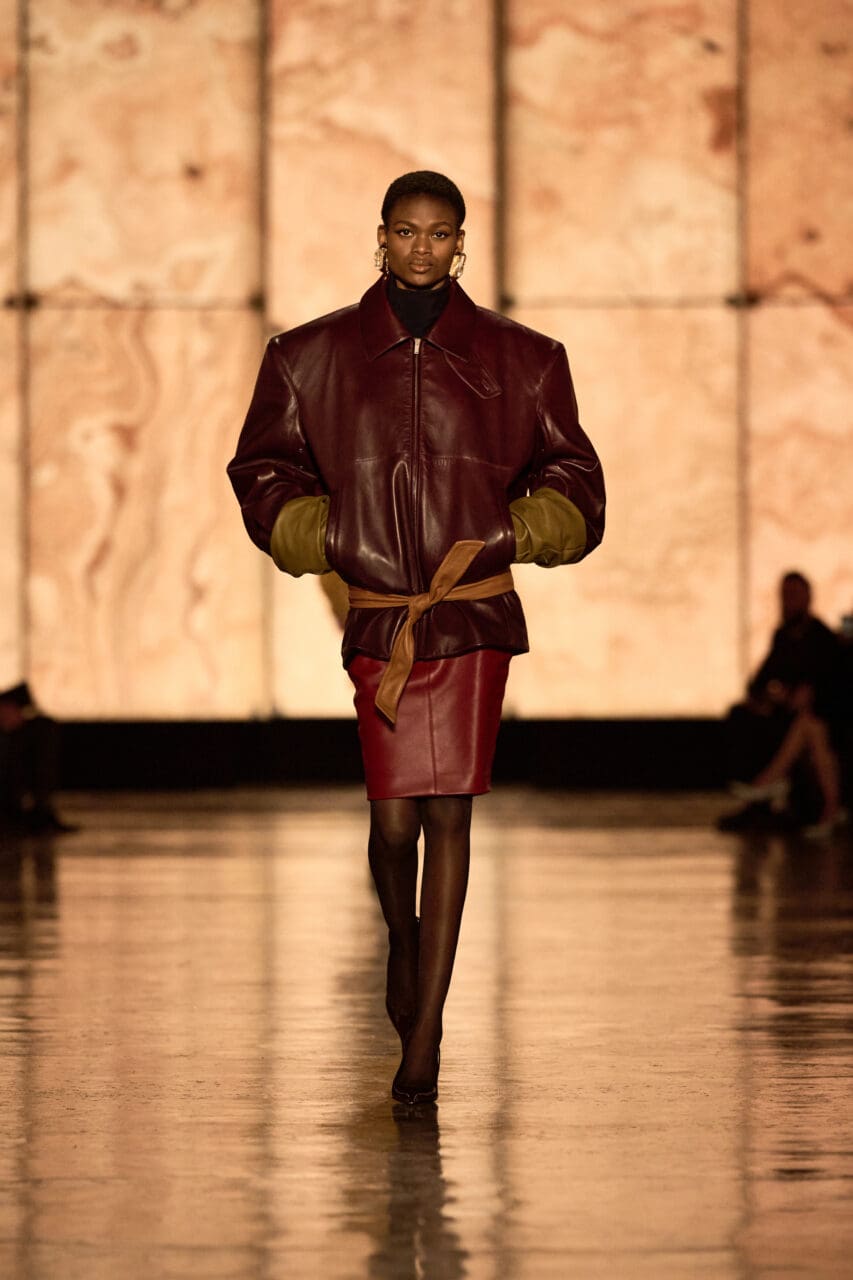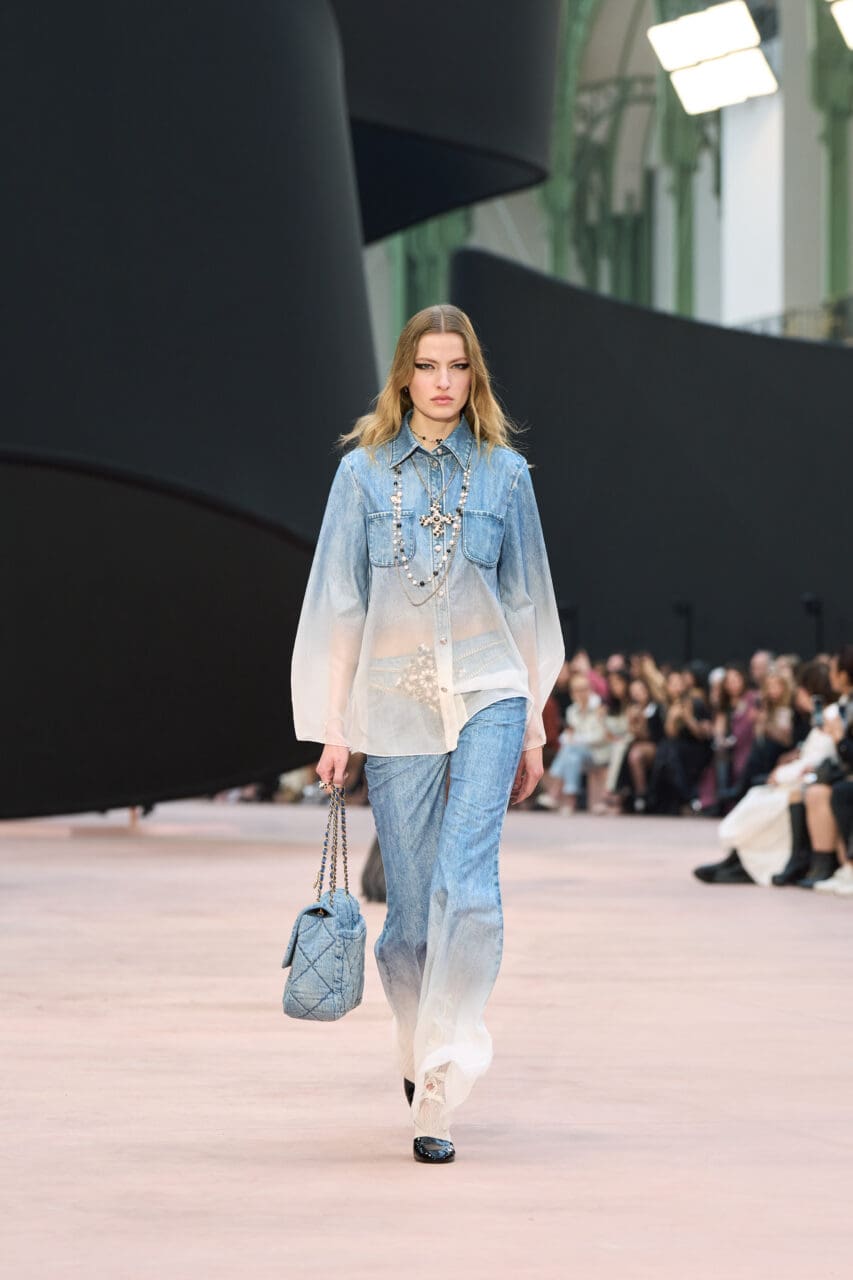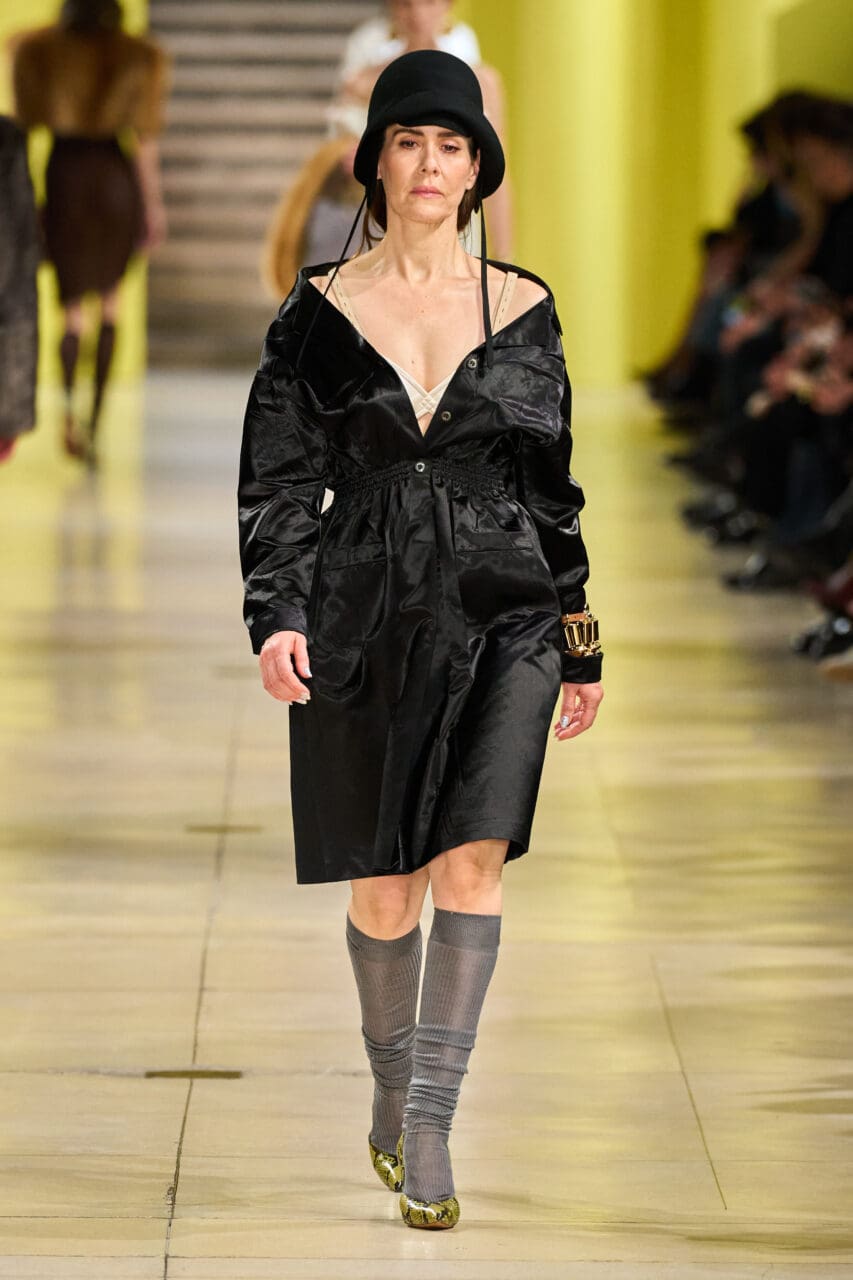Robert Wun celebrated the 10 year anniversary of his label with a couture show called Time today. He said he wanted to reflect on “why I’ve been doing this for so long, why do I still want to keep doing it, and for how long.” He used these questions as a starting point for a collection of one-of-kind extravagant showstoppers. “I asked myself why I do fashion, and what does time mean?“ Did he find an answer? “Yes, I did. The answer is to accept that one day everything ends — and that’s ok.”
For Wun, accepting time limitations fuels creativity; the only way to make time meaningful, he reasoned, is enjoying the time you’ve been given on earth. “To say that we’ve got to live in the moment is a cliché, but really, what you’re doing you can only do it once, so better enjoy it no matter success or failure.” So far, success has been a more likely prospect for Wun than failure. His elaborate concoctions have caught the attention of private clients as well as celebrities and their élite stylists, always on the prowl for the latest sensation. Wun creations’ flamboyant dazzle has attracted the likes of Beyoncé, Lady Gaga, Björk, and Cardi B, among many others—a list that today makes for the barometer of a brand’s hotness.
To translate the concept of the passing of time into actual clothing (not an easy feat really), Wun envisioned the progression of seasons. The opening look was a majestic black gown with matching veil embroidered in crystals, depicting “the first falling of snow,” he offered. “It’s winter, a season that makes people more reflective, so I started from there.” A snowy effect was also rendered as a white layer on a slender traling coat that looked as if it had been shredded apart and then mended back together with a sort of kitsugi technique, replicating a craquelé effect from which butterfly appliqués seemed to be swirling out—an allusion to hope perhaps? Or to beauty blossoming from decay?
The answer seemed to be provided by a sinuous black mermaid number, from which a tight-fitted bodice embroidered in pink cherry blossoms emerged. Wun said it was intended as an harbinger of spring. “In Chinese philosophy, flowers are beautiful because they aren’t meant to be forever; if they’d blossom forever people wouldn’t find beauty in them.” So the decay of beauty was a theme here; the erosion that time makes on every living being was apparently rendered by visible burns on the hems of a bright yellow three-piece in swishing silk, voluminous and entirely plissé. The burnings were repeated with conviction throughout the collection. “We scanned the burn marks we’ve done on a piece of organza, then we printed it on silk and we did further burning on the edges to emphasize the effect,” explained Wun. “Burn, scan, print, and then reburn.”
In the collection’s narration of the passing of time, the four final looks represented respectively the skin, the flesh, the bones, and the soul, in a sort of progressive stripping off, both physical and spiritual. The most impressively rendered were the flesh and the bone. The flesh was a blood-red slender sheath entirely covered in bugle beads that were sewn standing up as spikes and not flat as they’re usually embroidered. The dress was apparently so heavy (40 kilos) that it couldn’t be hung. “I wanted to give the idea of the muscles that come out of the body,” said Wun, who’s known to be an enthusiast of the horror genre—a penchant made abundantly clear by the representation of the bones. A skintight black jumpsuit was surmounted by a half-skeleton mannequin that dangled ominously at every step. Its rather literal rendition was somehow redeemed by that of the soul. It was a vision of a trailing veiled gown, where layers of tulle were embroidered with myriads of tiny multicolored crystals shimmering in the dimly lit venue. It looked rather magical. “The soul isn’t meant to perish,” Wun said. “It goes back to the Universe.”
Editor
Tiziana CardiniCredit
Lead image: Isidore Montag / Gorunway.com
